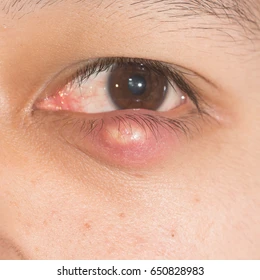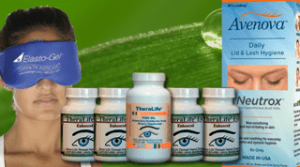How long does a stye last?
Stye or hordeoids are painful white bumps on the upper eyelids and can occur from infections caused by bacteria or fungi.
The condition can feel painful and unnatural, but is common, and most likely harmless. Many symptoms can be easily treated within a couple of weeks.
What is a stye? How long does a stye last?
Styes are a type of bacterial infection of the eyelid, typically causing a painful bump either inside or outside of it.
Styes look like small pimples on the upper or lower eyelid.
Most styes get better on their own and do not need medical treatment.
What is a chalazion?
A chalazion is a bump that usually occurs farther back on your eyelid. Unlike a stye, a chalazion usually isn’t painful and isn’t caused by a bacterial infection. But treatment for both conditions is similar.
Most Staphylococci occur in spots on human skin and inside the nose. The bacteria invades the underlying glands or hair follicles, proliferates and causes an immune reaction which results in inflammation of the eyelid (blepharitis). It is also important that you clean your eyelashes of all debris and dust so that they don’t get irritated.
Causes- how long does a stye last?
If you experience chronic styes, you probably have a condition called blepharitis , a common inflammation of the eyelids.
Conditions like meibomian gland dysfunction , eyelid infections, parasites and certain skin conditions can cause blepharitis.
Symptoms of a stye
Signs and symptoms of a stye include:
- A painful red bump along the eyelid edge near eyelashes.
- Swelling of your eyelid (sometimes the entire eyelid).
- Crusting along the eyelid.
- Light sensitivity.
- Soreness and itching.
- Eye tearing.
- A feeling that there’s something in your eye.
How long does a stye last?
Most tyes take between 2 weeks and 3 weeks for healing. First, the patient begins to notice pain or swelling in a specific region. Then the infections develop into small red bumps at the corners of eyelids, causing bruising. When patients have swollen eyelids that are painfully painful or last over a few weeks it could cause a condition called Chalazion. Chazia, commonly named meibomian cyst is no cyst but may occur as a result of the cyst. It’s more common for them to appear farther back under your eyelids than in a stye and can obstructing your vision as it grows larger.
Many sympathies leave for free in days or even days. Often a warm washcloth on closed eyes can aid in draining the stye from the eyes. Never try to stain as it can be harmful. Make a visit to the eye doctor for an exam.
What are the risk factors for developing a stye?
Styes can occur quite frequently. Everyone gets stye. But there’s a possibility of getting a stye if you: have dry eyes, meibomian gland dysfunction and blepharitis.
Are styes contagious? How long does a stye last.
Yes, a stye is contagious.
Types of styes- how long does a stye last?
The medical term for a stye is a hordeolum. There are two types of styes:
- External styes. These form on the outer part of either the upper or lower eyelid. These are the most common type and are usually caused by an infection in your eyelash follicle.
- Internal styes. They form on either of your inner eyelids (facing your eyeball). An internal stye is usually caused by an infection in the inner eyelid gland that produces oils that help keep lubricated.
Eye with upper eyelid stye
Most eyelashes tend to be itchy if the eyelid has become itchy. The common germs which cause infections are called “staphlococci aureus” and are known to cause infections. It can cause serious skin infections in healthy people. The majority doesn’t cause any damage. Occasionally this substance gets into the skin causing infections and abscesses.
Usually, eye conditions are characterized by blepharitis. This is an inflammation of the eyelids that may be enlarged, wet or itchy. Blepharitis may increase the chances of stasis.
Internal stye (internal hordeolum)
Internal stress occurs if some of the gland cells in the eyelids are infiltrated (mesophagous gland). The infection usually occurs on the inner surfaces of the eyelid, on the outer surface of the eye and is visible by sneezing. External sclerosis can be painful but often cause dull pain on the eyelid.
Internal styes are produced when the meibomian glands (oil producing glands) are damaged. The tiny ocular glands line the eyelids lining their outer surfaces and can cause styes in the skin.
Generally, internal styes are less common than external styes and may be worse. In most circumstances both styles are healing.
Sometimes symptoms can be persistent or severe, so medical attention is needed only in a limited amount of circumstances. If your eye stye is lasting for a week or worsening, contact your eye doctor.
External stye (external hordeolum)
It’s essentially an uncommon form of stye.
Technically it is an outer stye although it can be referred to simply as the stye. It is present on the edges of the eyelids due in part to infection of the eyelash root (the root). It can start as a small red patch but it can become a little abscessed as soon as it is collected. The outer edge reddens and swelling and the lid hurts.
When the eye follicle is infected with sweat glands or eyelashes they form on either side. External stye is the most common.
Prevention- how long does a stye last?
The best solution for this problem is to discard mascara and eyeliner used along the edges of the eye. It will prevent re-infection of the eye. Options that can be used as quick solutions for stain removal include:
Avoid wearing contact lenses and eye make-up until the stye has burst and healed. Do not burst a stye Do not try to burst a stye or remove an eyelash yourself. This can spread the infection.
Never share eye makeup with anyone else.
Stye Treatment- how long does a stye last?
The majority of patients are safe but need little or no medical care for themselves. Those who are irritated can take action to heal it sooner.
An eye doctor may suggest using eyelid wipes , artificial tears and warm compresses, along with limiting your use of eye makeup and contact lenses.
Clean eyelids.
Gently wipe away eye discharge with a mild soapy solution made from half baby shampoo and half water. You can also use the eyelid wipes available in most drugstores.
Don’t: Squeeze or pop a stye. Rub or touch your eyelid. Wear eye makeup or contact lenses until the area has healed.
Antibiotics
Very occasionally the infection can spread. It may spread to the surface of the eye, causing conjunctivitis, which may need antibiotic ointment or drops to clear the infection.
Warm compress
Home remedies for styes can reduce the amount of time they take to heal. The most common at-home treatment is a warm compress. Apply a warm compress to the affected eye for 10 to 15 minutes 2 to 4 times a day for several days.
Soak a clean flannel in warm water. Hold it against your eye for 5 to 10 minutes. Repeat this 3 or 4 times a day.
Applying a compress every day for 15 min. can help you eliminate your styes fast. Once the stye has begun drying, you can continue using hot compress until the bump disappears. Tell me the best method of applying a heat compress on a skin stye? It helps ease your pain and the bumps disappear.
Rewarm the washcloth by soaking it in warm water, wring and repeat. Many people believe that using green tea bags moistened in warm water as eye compresses will help the stye not only feel better but also speed healing, due in part to the antibacterial properties in green tea.
Incision and drainage of an external stye
It is a procedure performed by a doctor who specializes in treating an internal muscle injury. Using sterile needles and scalpels, one can open the stipe and drain the pus. You don’t want to do it yourself, because you can get an infection on your eyelids that may be fatal.
Drainage of an internal stye
Surgical procedures involve injection of local anesthetic onto your eyelid and flip it inside out to remove the stye. Usually these procedures will be performed under general anaesthesia, which is uncomfortable. Typically antibiotics are applied to eyelids during this procedure.
When to call an eye doctor? ( how long does a stye last?)
If the eye pain isn’t improving in 48 hours, you should contact your eye doctor immediately.
Best treatment for dry eyes, blepharitis and MGD- TheraLife.
References
Acute abscess within an eyelid sebaceous gland. (https://pubmed.ncbi.nlm.nih.gov/27168505/)





